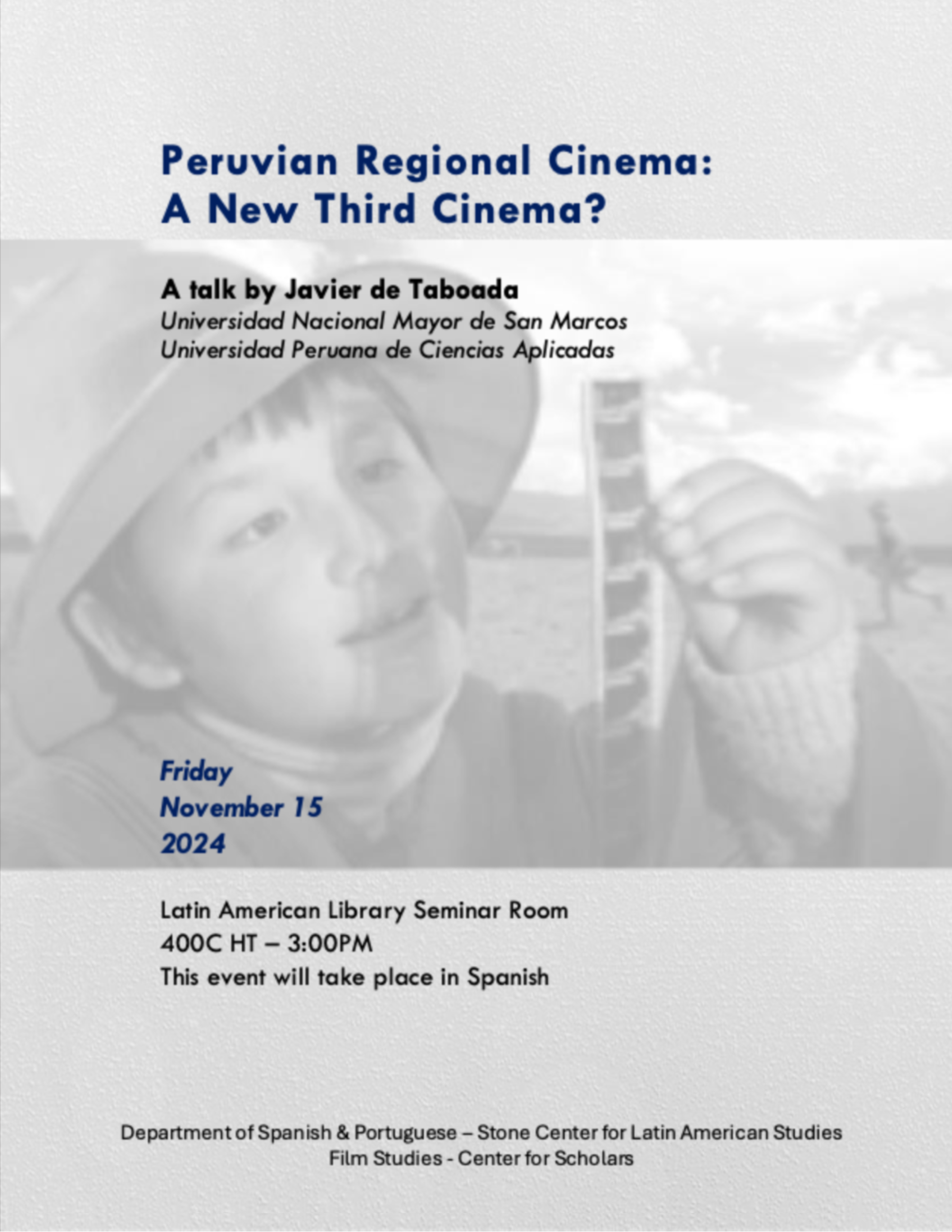
Peruvian films produced and directed mostly in small provincial cities out of the mainstream of the national cinema based in Lima have been categorized under the label of Regional Cinema (Cine Regional). In more than 20 years of existence, while spread out in different regions of the country and with almost no communication among its respective producers and directors, Regional Cinema has managed to consolidate an important production volume and create films of a high artistic quality. In its first phase, novice and amateur filmmakers, directing nonprofessional actors and with extremely low budgets, created their own alternative mode of production. They made or improvised technical devices (i.e., lighting panels, cranes, etc.), trained actors, showed films where there was no theater infrastructure, and cultivated an audience enthusiastic enough to financially support the venture. The choice of spoken language and the reference to cultural traditions were also crucial. Many movies were filmed in indigenous languages (Quechua, Aymara) or were bilingual. They drew on Andean mythology and local traditions to dissect acute social problems or examine traits of local culture that confront discourses of national identity.
Over the years, Regional Cinema acquired professional technical standards, and some movies become closer to auteur cinema. Films such as Wiñaypacha (2017, Oscar Catacora); Manco Cápac (2020, Henry Vallejo), La cantera (2019, Miguel Barreda) and Willaq Pirqa, el cine de mi pueblo (2022, César Galindo) are examples of both profound reflection on the human condition, and high artistic quality. It is a consensus among critics and audiences that some of the best Peruvian films of the last decade are regional films.
What critical framework and categories could be used to approach to this “new” cinema? How does it rethink film production? In the 1960s, the New Latin American Cinema, Third Cinema (Tercer Cine) and New Cinema (Cinema Novo), produced not only a corpus of innovative, committed and experimental films, but also theorized about its objectives and activity in manifestos and interviews. This was the case of Por un cine imperfecto (1969), by Julio García Espinosa, Hacia un Tercer Cine (1969), by Fernando Solanas and Octavio Gettino, “Uma estética da fome” (1965) by Glauber Rocha and Teoría y práctica de un cine junto al pueblo (1979) by Jorge Sanjinés and Grupo Ukamau. This talk will, first, make a critical presentation of Regional Cinema focusing on its main topics, the work of Andean mythology and traditions, the development of personal or cultural film languages, and the challenges and solutions at production level. Then, it will deal with the questions of how Regional Cinema confronts Peruvian National Cinema, how it dialogues with global or Western cinema, and how it relates to films, categories and ideas of the Latin American Tercer Cine and Cinema Novo.
Dr. Javier de Taboada received his BA in Peruvian and Latin American Literature from Universidad Nacional Mayor de San Marcos, and MA and PhD in Romance Languages from Harvard University. He teaches and researches on Latin American literature and Cinema at Universidad Nacional Mayor de San Marcos and Universidad Peruana de Ciencias Aplicadas, in Lima, Peru. He is the author of Europeos en Latinoamérica: cine y literatura transnacionales. La visión de Herzog, Buñuel, Aub y Gombrowicz (2017); coauthor of Aulas, muros y jaulas: Espacios de convivencia y conflicto en el cine latinoamericano (forthcoming); and has coedited Palabra, color y materia en la obra de Jorge Eduardo Eielson (2016). Also, he has published articles on Latin American Literature and Cinema as well as film reviews in his blog Palabras mayores and periodicals.
